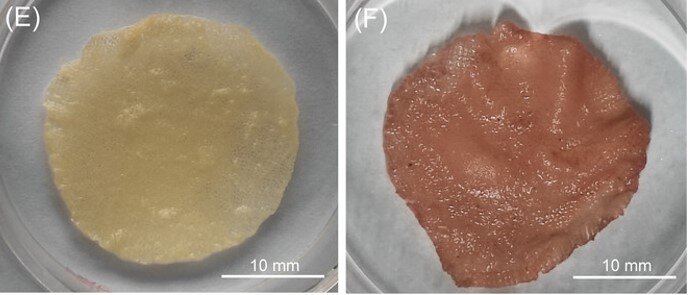Lab-grown, 3D-printed meat has emerged as a more sustainable and cruelty-free alternative to “regular” meat. But regardless of its environmental and ethical advantages, it won’t become mainstream if the cost is prohibitive. While the cost has gone down (from the cost of a rare painting to about the cost of a night out), it’s still not enough to be competitive with regular meat. Yet.
A new innovation could help reduce the costs even further: researchers have found a way to use food waste for culturing meat, reducing production costs significantly.

Every year, over 80 billion land animals are killed every year for food around the world — and that’s probably a gross underestimate. That also comes at a large carbon footprint, as meat is way less sustainable than pretty much every other type of food (and consumes more water and uses more land). Growing meat in a lab, a technique that sounds futuristic, may be right around the corner to offer an alternative.
To produce lab-grown meat (or cultured meat), muscle stem cells are grown on a 3D scaffold that is usually created through 3D printing, aiding the transport of nutrients and giving structure to the meat. The scaffold, or the “ink” that is 3D-printed then becomes an edible part of the resulting meat.
Because the scaffold becomes part of the meat, it is usually made from other animal products like gelatine or collagen, or from synthetic materials — but using animal products means the product still isn’t cruelty-free, and synthetic alternatives can be expensive.
In the new study, researchers used plant-based inks made from food waste like cereal husks. These products, which are not only healthy and safe to eat, but also cheap and easily available, could substantially reduce the cost of large-scale cultured meat production.

“This is a novel and disruptive idea to mass produce cultured meat. Using nutrients from food waste to print scaffolds not only uses and increases the value of the food waste but also alleviates the pressure on the environment from animal agriculture,” says Professor Jie Sun from Xi’an Jiaotong-Liverpool University, China, and one of the study authors.
“We have optimized our plant-based ink for 3D-printing technology so that we can print scaffolds and place muscle stem cells on them. The cells can then grow with the structure of the scaffold and we use beets to color the grown meat to give it the look of conventional meat.”

Designing scaffolds that are edible and strong enough to offer a familiar structure to meat, but also soft enough that they don’t ruin the texture, is not that easy. The meat also has to grow evenly. Sun and colleagues tested various materials until they finally zoomed in on plant protein. These plant-based compounds have the added bonus of adding more protein and fiber to the artificial meat product, making it a bit healthier. But the real appeal of this technique is cost: the cereal husks are much cheaper to use.

“Currently, one of the major reasons for the high cost of cultured meat is the nutrient medium for muscle cells, which is still from animal proteins. In the future, if suitable plant extracts can be found to supply nutrients, that will further reduce the cost of cultured meat, making it more affordable,” Professor Sun concludes.
Lab-grown meat has come a long way in a decade. Just 11 years ago, the first lab-grown burger cost over $300,000, while in 2017, the cost of production for a burger was around $12. As production is scaled, costs can go down even further, but while the price is close to that of animal meat (especially once you take out the subsidies the meat industry receives), it’s not quite there yet. Innovations such as this one can help bridge that final gap and make lab-grown meat competitive on the market.
In 2020, Singapore became the first country to approve the consumption of lab-grown meat and earlier this year, the FDA gave the technology the green light in the United States as well. Several companies already have running factories and if the rate of progress stays the same, cultured meat may be coming to a store near you sooner rather than later.
The study was published in the journal Advanced Materials.


